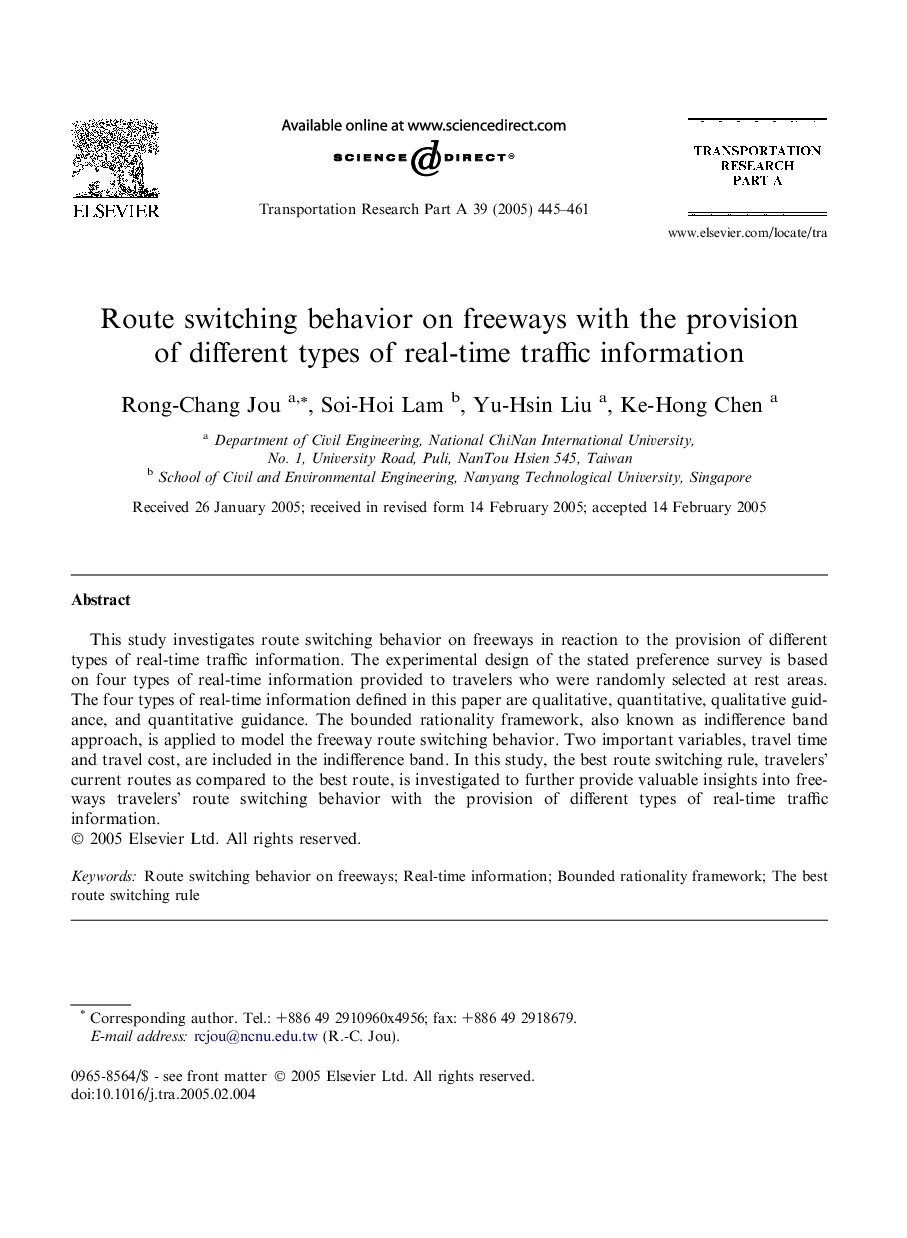| Article ID | Journal | Published Year | Pages | File Type |
|---|---|---|---|---|
| 10296576 | Transportation Research Part A: Policy and Practice | 2005 | 17 Pages |
Abstract
This study investigates route switching behavior on freeways in reaction to the provision of different types of real-time traffic information. The experimental design of the stated preference survey is based on four types of real-time information provided to travelers who were randomly selected at rest areas. The four types of real-time information defined in this paper are qualitative, quantitative, qualitative guidance, and quantitative guidance. The bounded rationality framework, also known as indifference band approach, is applied to model the freeway route switching behavior. Two important variables, travel time and travel cost, are included in the indifference band. In this study, the best route switching rule, travelers' current routes as compared to the best route, is investigated to further provide valuable insights into freeways travelers' route switching behavior with the provision of different types of real-time traffic information.
Keywords
Related Topics
Physical Sciences and Engineering
Engineering
Civil and Structural Engineering
Authors
Rong-Chang Jou, Soi-Hoi Lam, Yu-Hsin Liu, Ke-Hong Chen,
